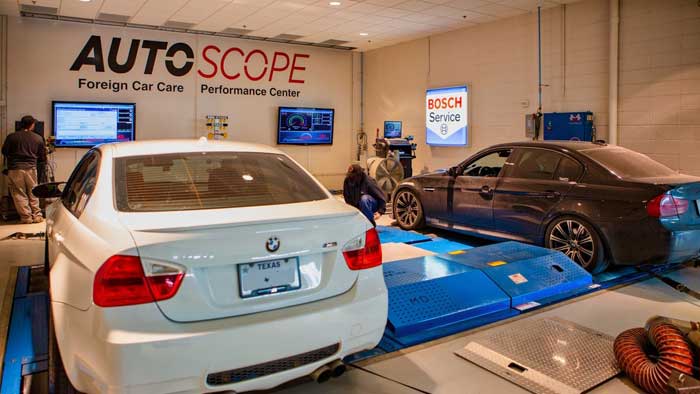When you purchased your European vehicle, it’s likely that horsepower was a factor in your decision. Not only do you want to get from A to B, but you also want an enjoyable driving experience, which means having power when you press the gas pedal.
How do you know if you’re getting the most horsepower that you could out of your vehicle?
Enter: Dyno Tests
While many racecar drivers test their vehicles on a regular basis to ensure maximum vehicle performance, even people who don’t race might want to test their vehicle’s performance, particularly certain aspects of the vehicle’s functions.
A dyno test (short for dynamometer) is a device that measures the force, torque or power in your vehicle. More specifically, a dyno test evaluates the measure of torque and rotational speed, giving a reading that indicates the amount of power in the engine. A dyno test typically uses electromagnetism to measure the force or horsepower.
However, a dynamometer can come in a variety of forms that all cater to slightly different applications. For example, a spring dynamometer is great for measuring a simple pulling force, but it is not so great at measuring the force of an engine or power of a machine. For more information for the variety of dynamometers and their interesting and different applications beyond your standard vehicle, check out Explain that Stuff here.
Your First Dyno Test: A How-To
Once you’ve determined the best dynamometer for your purposes and have properly installed it, you can begin to use the device for horsepower testing. Before diving into this, we do recommend that you begin with a mild engine that can be run at peak power and that is generally quite reliable, if possible.
- Once you’ve determined the best dynamometer for your purposes and have properly installed it, you can begin to use the device for horsepower testing. Before diving into this, we do recommend that you begin with a mild engine that can be run at peak power and that is generally quite reliable, if possible.
- Next, warm your engine to operating temperature, applying light loads to the engine occasionally during the warm-up. Then, gradually apply a full load on the engine while using the brake’s control valve to regulate the rpm.
- Once you are at a wide-open throttle leave the throttle there while you move between desired test rpm points with the brake’s load valve. Record the findings from the dyno test.
- Once you’ve stepped through each rpm point (for a length of time that allows for an accurate reading) reduce the throttle while also unloading the brake at the same time so that the engine returns to an idle. At this point, you can conclude your data collection. This is your first dyno test. We would recommend going beyond just one test, however; this allows you to practice this process and ensure that the data that you have collected is valid, repeatable and valuable to improving your vehicle’s performance.
- The data that you have collected throughout your dyno test can be recorded and then later examined should your horsepower need improvement. It’s also important to note that you may need to try a few times in order to get your vehicle’s dyno testing right.
Dyno testing allows for many vehicle owners to make the most of more insignificant findings and explore ways in which the data collected can be translated to improved power and torque in your engine.
Maximize Your Vehicle’s Power
Making the most of your vehicle’s performance doesn’t mean that you have to have all the equipment that racers do. As mentioned earlier, dyno tests are available in a variety of sizes and capabilities, so finding the right one for your vehicle and situation is important.
Instead, an experienced mechanic that specializes in European vehicles will be able to test for vehicle performance, in particular the areas of the engine that a dyno test would measure.
While you can pursue dyno testing at home, the benefit of working with an expert mechanic to evaluate your vehicle performance is the tailored advice afterwards; after testing, a mechanic can determine the best ways to repair or improve your vehicle to maximize its horsepower and give you that extra punch on the road that you crave.
Dyno Tests, Horsepower and Repair
Whatever you need for your European vehicle, we can help. Bringing your vehicle in for routine maintenance or an unrelated repair? Dyno testing can be easily added to the services provided for your vehicle so you can not only leave the shop with a functioning vehicle, but you can leave with increased horsepower at your fingertips.
AutoScope serves the Dallas, Plano, Frisco, Flower Mound, and Irving areas, specializing in quality services for European vehicles such as Audi, Porsche, MINI, Jaguar, BMW and Mercedes. Schedule your appointment at AutoScope today! Contact us online here.

